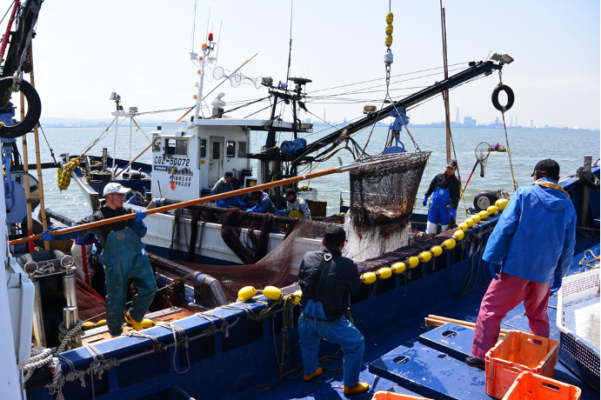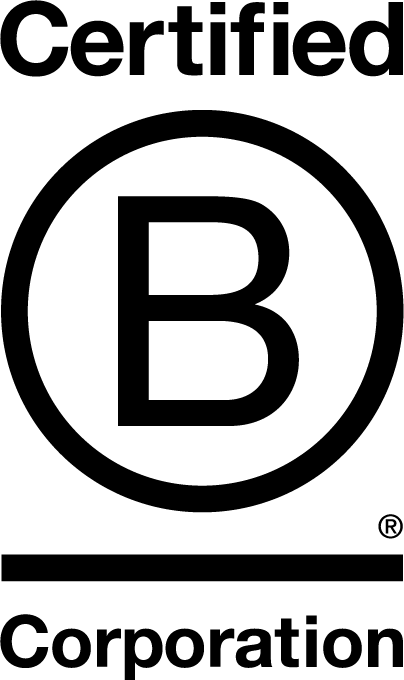
Addressing the Revised Fishery Act: Aiming for Sustainable Fishery through FIP (1/2)
In December 2020, Japan’s revised Fishery Act that focuses on sustainable utilization of fisheries resources went into effect. The amendments made significant changes to the fishery rights and licensing systems as well as to the nation’s fisheries resource management system. Especially in regards to resource management, the changes to standards and methods of stock assessment will likely affect catch volume for many fishers, forcing many to seek new approaches to operating their fisheries.
A model for how to implement the new Fishery Act can be found in Tokyo Bay: a mid-scale sea perch purse seine Fishery Improvement Project (FIP) that was developed by envisioning the future of coastal fisheries in Japan.
Looking 100 Years in the Future: The Challenge Toward MSC Certification
The Tokyo Bay sea perch FIP fisheries are led by Kazuhiko Oono and Shigehisa Nakamura, co-CEOs of a seafood wholesaler and distribution company Kaiko Bussan Co., Ltd. and chief fishermen of their own mid-scale purse seine fishing fleets, Daidenmaru and Nakasenmaru, respectively. The waters of Tokyo Bay were abundant with a wide diversity of fish species during Oono-san’s grandfather’s generation. Since then, however, Tokyo Bay has been affected by factors such as large-scale industrialization, deteriorating water quality, and decreasing fish diversity as well as catch volume. Oono-san, a 3rd-generation Tokyo Bay fisher inheriting 100 years of fishery history in Tokyo Bay, contemplated ways for Tokyo Bay fisheries to survive the next 100 years.
The decision Oono-san arrive at was to challenge for MSC certification acquisition to prove that their sea perch fishery was sustainable, and to supply their special “Shun-jime Sea Perch” — in-season, hand-selected sea perch that are bled and treated with a special nerve removal process to maximize the quality, freshness, and flavor of the fish — to the 2020 Tokyo Olympics and Paralympics Games.
In order to obtain MSC certification, one must undergo an MSC pre-assessment to understand where their fishery stands compared to the MSC certification pass level. The MSC pre-assessment requires a 3rd-party assessor to grade each of the 28 indicators within the three principles of MSC fisheries standard (sustainability of fish stocks; environmental impacts by fishing activity; and effectiveness of fisheries management system) against the target fishery and determines their potential for acquiring certification.
Oono-san had high hopes for the pre-assessment results since he had been implementing voluntary efforts to reduce the stress applied to the sea perch stock. However, the reality was much stricter than he initially thought.

Kazuhiko Oono aboard his vessel Daidenmaru, talking about wanting to incorporate biodegradable fishing nets.
1. Unknown Stock Status
“We don’t know the available balance of our bank account.”
Oono-san describes the reality of the sea perch stock status in Tokyo Bay by comparing it to one’s bank account. Not knowing the available balance makes it difficult to plan for the future, let alone decide how much can be spent on a daily basis. The same concept applies to fishing.
Kaiko Bussan had been voluntarily keeping catch volume records throughout the years. However, fisheries are required to maintain a variety of data such as CPUE figures in order to truly become sustainable. Furthermore, while Chiba Prefectural Fisheries Research Center has been conducting stock assessments for sea perch in Tokyo Bay, the species had not been considered a stock assessment target species from the Fishery Agency; therefore, the prefectural stock assessment of Tokyo Bay sea perch was deemed to be below the level required by the MSC Fisheries Standard.
2. Requirement to show consideration for the surrounding ecosystem
Even before embarking on the challenge to work toward MSC certification, Oono-san had been implementing voluntary resource management measures such as self-banning the fishing of sea perch during spawning season and setting a size limit, and releasing sea perch smaller than 25cm. Despite these efforts, however, the MSC standard required recording catch profiles of secondary species caught as well as maintaining data regarding potential impact caused by the fishing practice to other species — especially those identified as endangered — and the surrounding ecosystems to be able to say conclusively that they have an environmentally friendly fishing operation.
3. Proof that fishers voices are reflected in the fishery management system
Oono-san and Nakamura-san both hold fishing rights issued by the Chiba prefectural government and are members of the Funabashi City Fisheries Cooperative Association (FC). Within the MSC standard, there is a need to verify how FCs and China prefectural government incorporate on-the-water input from fishers to develop management systems and regulations, measuring how compliance is achieved, and whether review and dialogue regarding these mechanisms are conducted in a transparent way that allows fishers to participate. These may seem like obvious processes that are followed; however, the standard cannot be fully met until documentations are provided to prove that these processes are at play.
These are challenges that cannot be solved by fishers alone.
In 2016, Kaiko Bussan, led by Oono, launched the Tokyo Bay Sea Perch FIP with the goal of obtaining MSC certification by 2021.





